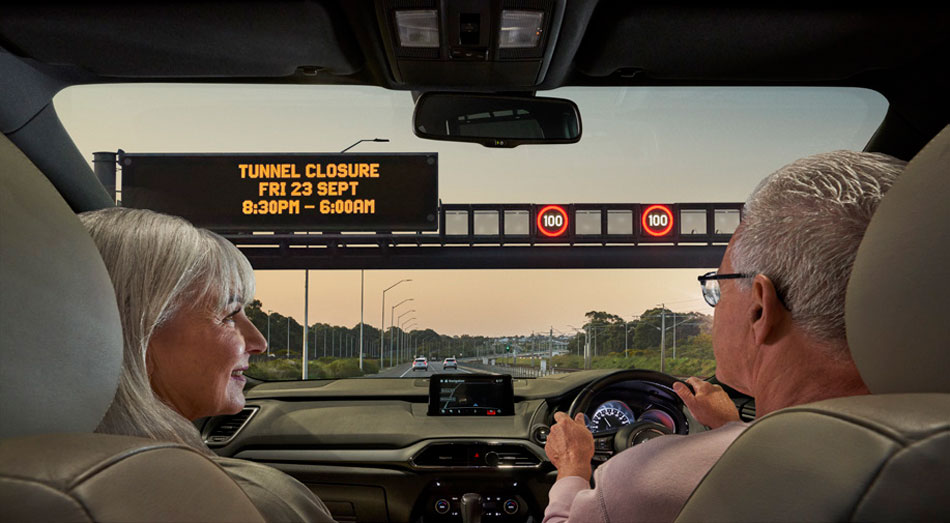Digital Signage: Electronic LED Signs for Roads
The revolution in road signage is being predominantly led by the rapid advancements in digital technology. Among these innovations, electronic LED signs stand out as a pivotal development, transforming how information is communicated on our roadways. These signs are not only enhancing traffic management but are also pivotal in improving road safety and boosting the efficiency of real-time communication to the motoring public.
In an era where immediacy and accuracy of information are paramount, digital signage is proving to be indispensable on our roads. Electronic LED (Light Emitting Diode) signs represent a significant leap from traditional static signs, offering dynamic content that can change in real-time based on prevailing road conditions, traffic updates, or emergencies. By leveraging high-intensity LEDs, these signs deliver clear, unmistakable messages day and night, under various weather conditions.
The transition from conventional signage to digital LED displays is driven by the need for smarter infrastructure to cope with growing vehicle populations and the demands of urban expansion. Road users benefit significantly from real-time data that assists in making informed decisions, potentially reducing the likelihood of road incidents and improving the flow of traffic.

Benefits of Electronic LED Signs
Electronic LED signs introduce a range of benefits that enhance roadway operations and safety. Firstly, their luminosity and clarity ensure high visibility from great distances, which is crucial for conveying messages effectively to motorists moving at high speeds. Secondly, the ability to update content remotely in real-time allows traffic management centers to respond swiftly to emergencies, such as accidents or natural disasters, by providing timely warnings to drivers.
Moreover, LED signs are incredibly versatile, capable of displaying a variety of graphics and animations. This flexibility makes them suitable for a broad spectrum of applications, from showing simple speed limits to complex dynamic messages like lane closures or speed recommendations based on real-time traffic conditions. Coupled with their durability and lower energy consumption compared to traditional incandescent signs, LED signs are not only more environmentally friendly but also cost-effective in the long run.
Technological Innovations in LED Signage
As technology evolves, so too does the capability of electronic LED road signs. Modern LED displays are equipped with sensors and connectivity technologies that enable them to operate intelligently. For instance, ambient light sensors automatically adjust the brightness of the displays based on the time of day, enhancing readability and energy efficiency. Moreover, integration with IoT (Internet of Things) platforms allows for seamless communication between signs and traffic control systems, ensuring that the displayed information is consistently synchronised with real traffic data.
Implementation Challenges
Transitioning to fully digital signage systems is not devoid of challenges. The initial investment for installing LED signs can be substantial, especially for extensive road networks. There is also the technical challenge of ensuring these signs can withstand various environmental factors such as extreme temperatures, moisture, and vandalism, which necessitates robust engineering and high-quality materials.
Policy and standardisation pose another significant hurdle. For electronic LED signs to be universally effective, they must adhere to specific standards regarding brightness, contrast, and message format to avoid creating confusion among drivers. Establishing these standards requires cooperation and coordination between various governmental and engineering entities, which can be time-consuming and complex.
Case Studies: Successful Deployments
In regions where electronic LED signs have been fully integrated, the results are overwhelmingly positive. For example, in Australia, dynamic lane management and speed limit control systems in urban areas have contributed to a noticeable reduction in traffic congestion and accidents. More information on such implementations can be found at Jason Signs, a leader in providing bespoke LED sign solutions.
Internationally, places like Tokyo and Los Angeles have embraced extensive networks of digital road signage, reaping benefits from improved traffic flow and enhanced public safety. These case studies exemplify the transformative potential of LED road signs and serve as a blueprint for other cities aiming to modernize their road infrastructure.
Future Trends in Road Signage Technology
Looking towards the future, the potential for further innovation in road signage is immense. We can anticipate more integrated systems where digital signs communicate not only with traffic control centers but directly with vehicles as well. This vehicle-to-infrastructure (V2I) communication is expected to be a cornerstone of the forthcoming autonomous vehicle revolution, where real-time data exchange will be crucial for safe and efficient navigation.
Furthermore, the advent of solar-powered LED signs offers a sustainable alternative that aligns with global renewable energy goals. These environmentally friendly solutions could significantly reduce the operational costs of road signage systems and decrease the carbon footprint associated with road infrastructure.
Conclusion
The transition to electronic LED signs on our roads is an essential evolution in response to the demands of modern traffic management and the overarching goals of road safety and infrastructural efficiency. While challenges in implementation and standardisation exist, the long-term benefits of these systems in promoting a smoother, safer driving experience are indisputable. As technology continues to advance, it is clear that the future of road signage is bright—lit vividly by LEDs.
